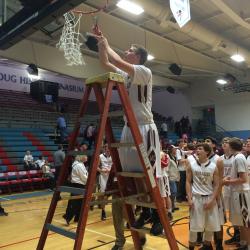In today’s society the sad reality is that there’s no off-season for many high school athletes.
There was a time when high school athletes participated in sports as a hobby, to give them enjoyment in-between the grind of schoolwork and homework. Lately, though, high school athletics have become more of a career than a hobby. Too many kids are burned out by their senior years.
What’s the culprit? It’s year-round athletics.
Year-round is a movement that began about 20 years ago. It pushes high school athletes from all sports backgrounds to attend practices and tournaments during the months they should be resting their minds and bodies.

Courtesy: NBC Camps
Some states, like Kentucky, has passed bylaws ensuring that young athletes receive much-needed rest. The Kentucky High School Athletic Association (KHSAA) has Bylaw 23-Section 3-Part A, which states: “Following the opening day of school, there shall be no organized basketball practice prior to October 15.”
The problem? During summer vacation some coaches compel players to attend practices for as many as five days a week. That means the KHSAA isn’t enforcing its own bylaw.
I understand why coaches prefer summer practices and want players to play in summer leagues. The objective is to help athletes reach their full potential. But I also know that athletes are missing out on opportunities that come with being young. Some coaches discourage players from having a boyfriend or girlfriend, working a part-time job, and … well … having a life outside of sports.
The high school sports culture has changed from the 1980s when my dad was in high school. An honor student, he played for John Dee Wilson on the Webster County HS basketball team. Wilson was legendary, a slow-talking coach from the mountains of eastern Kentucky.

Courtesy: NY Daily News
But my dad’s life was more than basketball. To help his family make a living he’d strip tobacco on the family farm. Coach Wilson understood that. So he’d excuse my dad from practice each time my dad had farm chores.
Would today’s coaches do that?
What’s more, my dad tells me that his teammates rarely played basketball during the off-season. They had summer jobs. They’d occasionally meet at the high school for “open gym” sessions but, other than that, they hardly saw each other from the time the season ended until the Tuesday after Labor Day–the day when conditioning started.
That didn’t mean players back then were soft. Hardly! Try telling that to Mack Townsend at his place, Townsend’s, in Dixon. He’ll tell you stories about a coach he played for. “Practice isn’t over until somebody is bleeding,” the coach would say.
Another thing that has changed over the years is the decline in the humber of high school athletes who play multiple sports. That’s because coaches today often discourage players from participating in more than one sport.
Limiting yourself to one sport isn’t always in an athlete’s best interests. And it has become a serious problem at small rural schools. To sustain sports programs those schools (and communities) need players to play more than one sport.
The interesting thing about the trend to specialize is that it flies in the face of athletic success. According to Tim Whelan, Jr. of USA Today, thirty of the thirty-two players who were drafted in the first round of this year’s NFL Draft were multi-sport athletes. Fourteen of those players participated in three or more high school sports.

James Naismith (photo, tscpl.org)
Consider, too, why Dr. James Naismith invented the game of basketball back in 1891. He created the game to give football and baseball players a way to stay in shape during the off-season.
But, in today’s society, the sad reality is that there’s no off-season for many high school athletes. Even college athletes, such as former Webster County basketball players, Mason Roland (Brescia University) and Cayden Edmonson (Bethel University), will tell you that they did not practice nearly as much during high school as they now do in college.
Ending on a personal note, I played basketball during all of my four years at Webster County High School. I went as hard as I possibly could at every single practice, too. That’s because my parents had instilled in me a very strong work ethic and I wanted to be a Webster County Trojan, just like my dad.
But now, in retrospect, I think I allowed basketball to consume too much of my personal life.
I passed up opportunities to do things with friends because basketball was my life for as many as six–if not seven–days a week during basketball season, and for as many as four days a week during the off-season.
This spring and summer is the first time in years that I’ve had a life outside of a gym. I hate to say it, but my new life has been an enjoyable experience.
The purpose of high school sports is to enrich athletes’ lives. But, somewhere along the line, high school sports has BECOME their lives.
What lost in the exchange? It’s the positive experiences and memories of high school. Those opportunities fly by, never to return.
That harsh reality came all too late for me.
_________________________
Cameron Brown is a sports columnist with The Journal-Enterprise, Providence, Kentucky. Contact him at cameronbrown647@yahoo.com.















You’re absolutely correct! For optimal physical and psychological development the growing athlete needs both solid repetitions in the sport he or she focuses on, as well as proper amounts of rest and relief from the bodily demands of the sport. The quickness and split-second decision making skills developed and fine-tuned in basketball can play a significant role baseball. The grit and toughness developed in football can directly apply to basketball. to create a physically balanced athlete, playing different sports as the seasons pass is key. To prevent psychological burnout, relief from the sport is key.